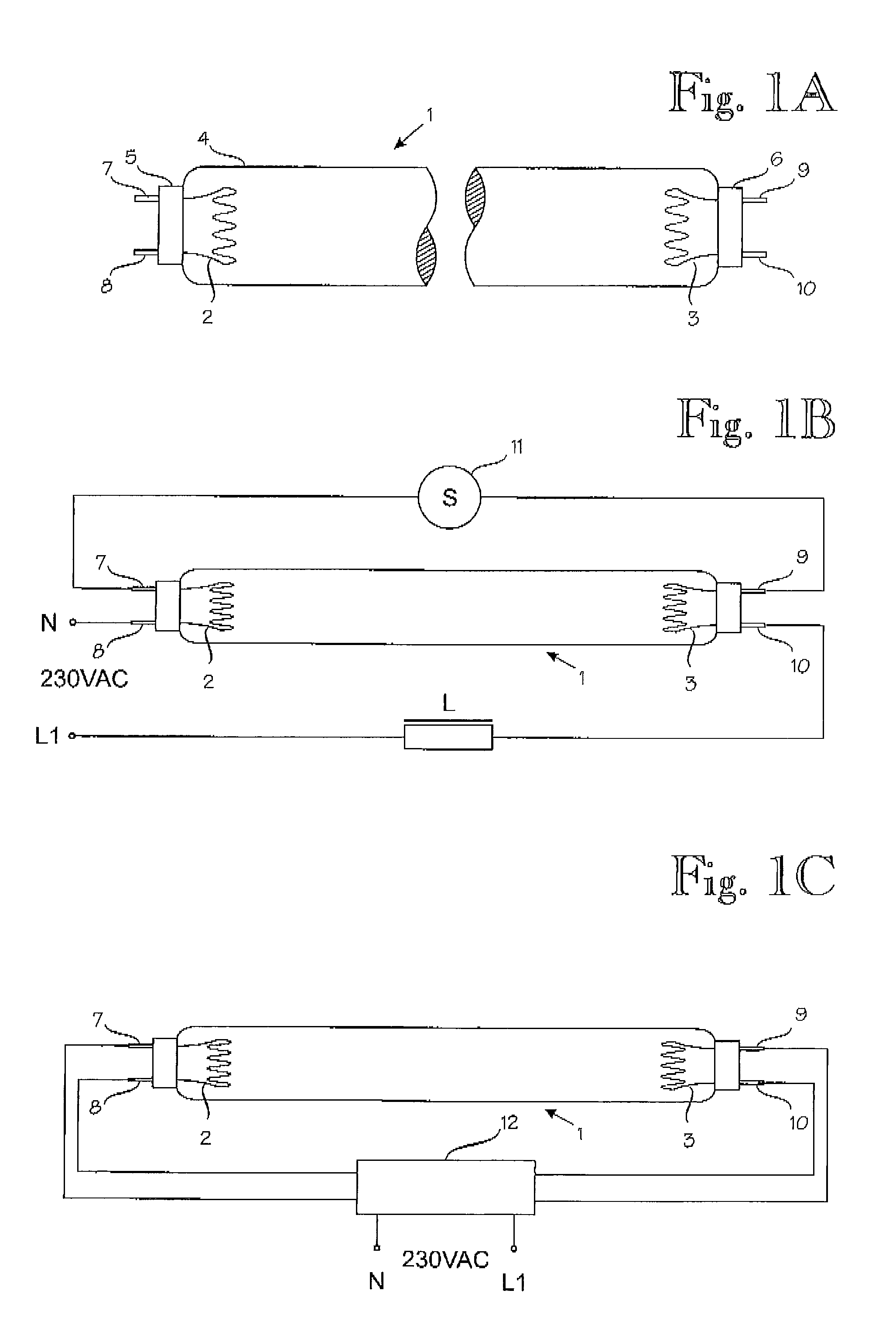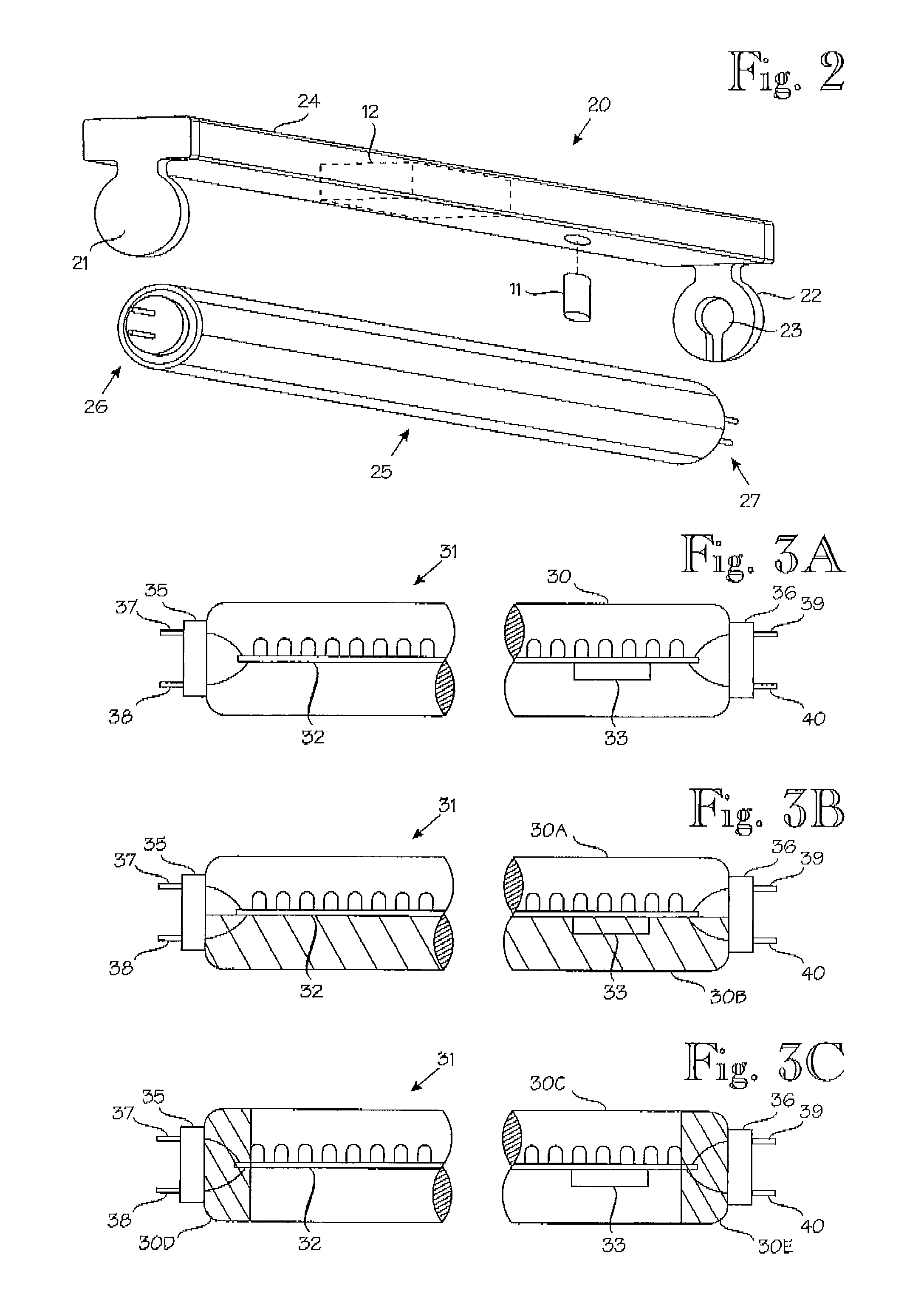LED tube and lighting fixture arrangement
a technology of led tubes and lighting fixtures, applied in the field of lamps, can solve the problems of deteriorating electric safety of led tube cooling, metal cooling parts must be insulated sufficiently reliably, and the electric safety requirement is not met, so as to achieve significant distributed capacitance and leakage current, and the effect of relatively high distributed capacitan
- Summary
- Abstract
- Description
- Claims
- Application Information
AI Technical Summary
Benefits of technology
Problems solved by technology
Method used
Image
Examples
Embodiment Construction
[0052]The field of application of the invention encompasses all lamps, particularly tube lamps which have one or more LEDs as a light source and with which a fluorescent tube lighting fixture or the like can be replaced.
[0053]FIG. 3A illustrates a simplified example of a potential structure of a LED tube. A lamp 31 consists of a straight (or bent) tube 30 which is of an appropriate translucent material, such as glass or plastic, or possibly of a fluorescent material. The tube 30 does not have to be air-tight. On the contrary, there may be openings, holes and / or slots for providing air circulation and cooling (e.g. U.S. Pat. No. 7,011,260), whereby the air flows through these holes, transferring heat out of the LEDS to the outside of the tube. In such a solution, owing to the LED tube body made of plastic or other insulation material, high insulation level of the energized parts is still maintained.
[0054]Alternatively, part of the tube casing of the LED tube may be made of metal or m...
PUM
 Login to View More
Login to View More Abstract
Description
Claims
Application Information
 Login to View More
Login to View More - R&D
- Intellectual Property
- Life Sciences
- Materials
- Tech Scout
- Unparalleled Data Quality
- Higher Quality Content
- 60% Fewer Hallucinations
Browse by: Latest US Patents, China's latest patents, Technical Efficacy Thesaurus, Application Domain, Technology Topic, Popular Technical Reports.
© 2025 PatSnap. All rights reserved.Legal|Privacy policy|Modern Slavery Act Transparency Statement|Sitemap|About US| Contact US: help@patsnap.com



